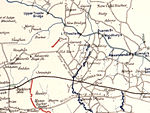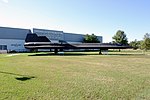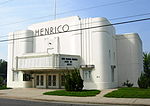Eastwind Airlines Flight 517
1996 in VirginiaAccidents and incidents involving the Boeing 737 OriginalAirliner accidents and incidents caused by design or manufacturing errorsAirliner accidents and incidents caused by mechanical failureAirliner accidents and incidents in Virginia ... and 4 more
Aviation accidents and incidents in 1996Eastwind Airlines accidents and incidentsJune 1996 events in the United StatesUse mdy dates from December 2017

On June 9, 1996, while operating a passenger flight from Trenton, New Jersey to Richmond, Virginia, the crew of Eastwind Airlines Flight 517 temporarily lost control of their Boeing 737-200 because of a rudder malfunction. The crew were able to regain control and land the aircraft successfully. One flight attendant was injured. Flight 517 was instrumental in resolving the cause of Boeing 737 rudder issues that had caused two previous fatal crashes because it was the first flight to experience such rudder issues and land safely, allowing investigators to interview the pilots about their experience and to study the aircraft.
Excerpt from the Wikipedia article Eastwind Airlines Flight 517 (License: CC BY-SA 3.0, Authors, Images).Eastwind Airlines Flight 517
Richard E Byrd Terminal Drive, Richmond
Geographical coordinates (GPS) Address Phone number Website Nearby Places Show on map
Geographical coordinates (GPS)
| Latitude | Longitude |
|---|---|
| N 37.505 ° | E -77.319444444444 ° |
Address
Richmond International Airport (Byrd Field / Intl)
Richard E Byrd Terminal Drive 1
23250 Richmond
Virginia, United States
Open on Google Maps






